In this Q&A, we are basically asking for sliding max values. This has been explored before - Max in a sliding window in NumPy array. Since, we are looking to be efficient, we can look further. One of those would be numba and here are two final variants I ended up with that leverage parallel directive that boosts performance over a without version :
import numpy as np
from numba import njit, prange
@njit(parallel=True)
def numba1(a, W):
L = len(a)-W+1
out = np.empty(L, dtype=a.dtype)
v = np.iinfo(a.dtype).min
for i in prange(L):
max1 = v
for j in range(W):
cur = a[i + j]
if cur>max1:
max1 = cur
out[i] = max1
return out
@njit(parallel=True)
def numba2(a, W):
L = len(a)-W+1
out = np.empty(L, dtype=a.dtype)
for i in prange(L):
for j in range(W):
cur = a[i + j]
if cur>out[i]:
out[i] = cur
return out
From the earlier linked Q&A, the equivalent SciPy version would be -
from scipy.ndimage.filters import maximum_filter1d
def scipy_max_filter1d(a, W):
L = len(a)-W+1
hW = W//2 # Half window size
return maximum_filter1d(a,size=W)[hW:hW+L]
Benchmarking
Other posted working approaches for generic window arg :
from skimage.util import view_as_windows
def rolling(a, window):
shape = (a.size - window + 1, window)
strides = (a.itemsize, a.itemsize)
return np.lib.stride_tricks.as_strided(a, shape=shape, strides=strides)
# @mathfux's soln
def npmax_strided(a,n):
return np.max(rolling(a, n), axis=1)
# @Nicolas Gervais's soln
def mapmax_strided(a, W):
return list(map(max, view_as_windows(a,W)))
cummax = np.maximum.accumulate
def pp(a,w):
N = a.size//w
if a.size-w+1 > N*w:
out = np.empty(a.size-w+1,a.dtype)
out[:-1] = cummax(a[w*N-1::-1].reshape(N,w),axis=1).ravel()[:w-a.size-1:-1]
out[-1] = a[w*N:].max()
else:
out = cummax(a[w*N-1::-1].reshape(N,w),axis=1).ravel()[:w-a.size-2:-1]
out[1:N*w-w+1] = np.maximum(out[1:N*w-w+1],
cummax(a[w:w*N].reshape(N-1,w),axis=1).ravel())
out[N*w-w+1:] = np.maximum(out[N*w-w+1:],cummax(a[N*w:]))
return out
Using benchit package (few benchmarking tools packaged together; disclaimer: I am its author) to benchmark proposed solutions.
import benchit
funcs = [mapmax_strided, npmax_strided, numba1, numba2, scipy_max_filter1d, pp]
in_ = {(n,W):(np.random.randint(0,100,n),W) for n in 10**np.arange(2,6) for W in [2, 10, 20, 50, 100]}
t = benchit.timings(funcs, in_, multivar=True, input_name=['Array-length', 'Window-length'])
t.plot(logx=True, sp_ncols=1, save='timings.png')

So, numba ones are great for window sizes lower than 10, at which there's no clear winner and on larger window sizes pp wins with SciPy one at second spot.


